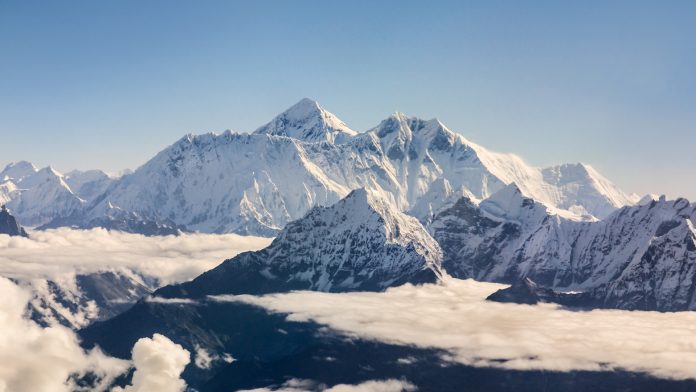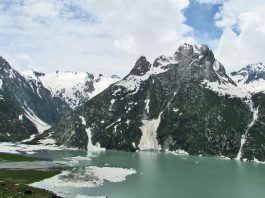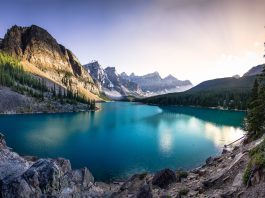Researchers analyse the mass glacier declines on Mount Everest to discover the effects of human-induced climate change.
Melting and sublimation of ice on Mount Everest’s highest glacier have reached the point that several decades of snow accumulation are now being lost annually, due to human-induced climate change. This research was revealed by a University of Maine-led international research team that analysed data from the world’s highest ice core and automatic weather stations.
The rapid rate in which the high-altitude Himalayan ice masses are decreasing forewarns of the dangerous emerging effects from climate change impacts. For instance, this could include increased avalanches, and a decreased capacity of the glacier stored wate, which more than 1 bn people depend on for drinking water and irrigation.
Mount Everest expeditions at risk
At the rate that the highest glaciers are disappearing, Mount Everest expeditions could be climbing over more exposed bedrock, potentially making it more challenging to climb, according to University of Maine climate scientists Mariusz Potocki and Paul Mayewski.
The team’s findings, published in the Nature Portfolio Journal Climate and Atmospheric Science, are the latest research results from the 2019 National Geographic and Rolex Perpetual Planet Everest Expedition. The expedition’s scientists, including six from the University of Maine’s Climate Change Institute, studied environmental changes to understand future impacts for life on Earth as global temperatures continue to rise.
“This latest research confirms the heights that human-sourced climate change has reached. The results serve as a bellwether for other high-mountain glacier systems and the potential impacts of glacier mass declines,” said Mayewski, a glaciologist and director of UMaine’s Climate Change Institute who was the expedition leader and lead scientist for the Perpetual Planet Everest Expedition.
“It answers one of the big questions posed by our 2019 NGS/Rolex Mount Everest Expedition — whether the highest glaciers on the planet are impacted by human-source climate change. The answer is a resounding yes, and very significantly since the late 1990s,” Mayewski explained.
The timing and cause of the mass loss of the South Col Glacier
The study points to the critical that the balance snow-covered surfaces provide and the “potential for loss throughout high mountain glacier systems as snow cover is depleted by changes in sublimation — passing from a solid to vapor state — and surface melt driven by climate trends. Everest’s highest glacier has served as a sentinel for this delicate balance and has demonstrated that even the roof of the Earth is impacted by anthropogenic source warming,” the researchers note in their paper.
In their investigation of the human-induced climate change effects on Mount Everest, they analysed the timing and cause of the significant mass loss of the South Col Glacier. The researchers used data analysed from a 10-meter-long ice core and weather stations, as well as photogrammetric and satellite imagery. They estimated contemporary thinning rates are approaching approximately two meters of water per year now that the glacier has turned from snowpack to ice, losing its ability to reflect solar radiation, resulting in rapid melting and increased sublimation.
Once the South Col Glacier ice was regularly exposed, approximately 55 meters of glacier thinning is estimated to have occurred in a quarter-century — thinning over 80 times faster than the 2,000 years it took to form the ice at the surface. The researchers note that increasing overall surface ice mass loss in the region — the transition from permanent snowpack to majority ice cover — could have been triggered by climate change since the 1950s. Sublimation has been enhanced by rising air temperatures. The impacts of climate change on the glacier have been most intense since the late 1990s.
Model simulations found that the region’s extreme insolation means that ablation — loss of surface mass by melting or vaporisation — can accelerate by more than 20% if snow cover gives way to ice. While warming air temperatures caused most of the sublimation, declining relative humidity and stronger winds also were factors.
“Climate predictions for the Himalaya suggest continued warming and continued glacier mass loss, and even the top of the Everest is impacted by anthropogenic source warming,” says Potocki, a glaciochemist and doctoral candidate in the Climate Change Institute who collected the highest ice core on the planet.









